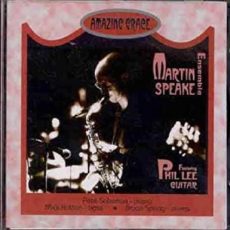
Daily Dose Of Jazz…
Phillip Robert Lee was born on April 8, 1943 in London, England and studied guitar with Ike Isaacs as a teenager. He was a member of the National Youth Jazz Orchestra, including their performance in the 1960 Antibes Jazz Festival. By the 1960s he was playing with John Williams and Graham Collier, was resident at Ronnie Scott’s Old Place, and in a band that included Bob Stuckey, Dudu Pukwana, and John Marshall.
During the 1970s, he played in jazz-rock bands such as Gilgamesh and Axel with Tony Coe and with Michael Garrick, Henry Lowther, and John Stevens. He recorded Twice Upon a Time in 1987 with Jeff Clyne.
Later in his career, he worked with Gordon Beck, Andres Boiarsky, Benny Goodman, Lena Horne, Marian Montgomery, Annie Ross, Dardanelle, Harry Edison, Ken Peplowski, Eddie Daniels, Jimmy Smith and the London Jazz Orchestra.
Phil Lee began playing jazz in the 1960s and. Since then he has recorded and appeared live with a vast range of musicians. including Pat Smythe, Duncan Lamont, Norma Winstone, Michael Garrick, Jimmy Hastings and Martin Speake. Phil has toured with Charles Aznavour, Michel Legrand, Gordon Beck and recently Jessye Norman.
In the 1970s he was a member of the fusion band Gilgamesh. His musicianship is held in high regard not only by fellow jazz players but also by musicians in other genres. His film credits include brief appearances in Eyes Wide Shut and Alan Plater’s TV film Misterioso and his playing featured in The Last of the Blonde Bombshells. Guitarist Phil Lee continues to perform, record and tour.
More Posts: guitar,history,instrumental,jazz,music
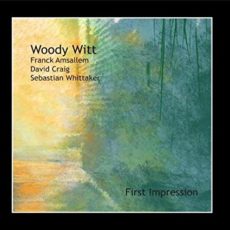
Daily Dose Of Jazz…
Woody Witt was born on March 16, 1969 in Omaha, Nebraska and started on the clarinet in fourth grade and switched his focus to saxophone the following year. A professional musician from the age of 16, he studied at the University of Houston, earned a Master’s degree in Jazz Studies from the University of North Texas, and a doctorate from the University of Houston’s Moores School of Music.
As a saxophonist, Witt has recorded ten albums as a leader and over twenty-five albums as a sideman. He has collaborated with major jazz artists such as Randy Brecker, Tim Hagans, Jim Rotondi, the late James Moody, David Liebman, and Tim Armacost, Conrad Herwig, Larry Ham, Joe LoCascio, Mark Levine, Louis Hayes, Adam Nussbaum, Billy Hart, and Nancy King. He has worked with the Houston Symphony and Houston Ballet and has been featured on major third-stream works that blend together jazz and classical music.
The winner of the 2010 Chamber Music America French American Cultural Exchange grant and the 2014 International Jazz Saxophone Competition in Taiwan, Woody is the booker and the artistic director at Houston’s top jazz club, Cezanne. He has taught at Houston Community College since 2000, is an Affiliate Artist at the University of Houston, and conducts a countless number of workshops and masterclasses throughout the United States, France, Romania, Germany, and Asia. Currently, saxophonist Woody Witt is involved in several different group projects.
More Posts: bandleader,educator,history,instrumental,jazz,music,saxophone
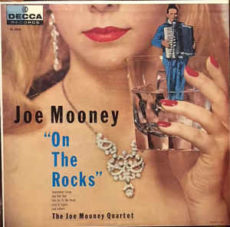
Daily Dose Of Jazz…
Joe Mooney was born in Paterson, New Jersey on March 14, 1911 and went blind when he was around 10 years of age. His first job, at age 12, was playing the piano for requests called in to a local radio station. He and his brother, Dan, played together on radio broadcasts in the late 1920s, and recorded between 1929 and 1931 as the Sunshine Boys and the Melotone Boys, both sang while Joe accompanied on piano. They continued performing together on WLW in Cincinnati, Ohio until 1936, after which time Dan Mooney left the music industry.
In 1937, he began working as a pianist and arranger for Frank Dailey, a role he reprised with Buddy Rogers in 1938. Through the early 1940s, Joe arranged for Paul Whiteman, Vincent Lopez, Larry Clinton, Les Brown, and The Modernaires. Putting together his own quartet in 1943, he sang and played the accordion with accompaniment on guitar, bass, and clarinet.
In the last half of the 1940s his group experienced considerable success in the United States. By 1946, a newspaper columnist wrote that Mooney’s music “has the most cynical hot jazz critics describing it in joyous terms, such as exciting, new, the best thing since Ellington, and as new to jazz as the first Dixieland jazz band was when it first arrived”. As for Mooney himself, the columnist wrote that he “played in virtuoso fashion … a fellow who knows not only his instrument, but jazz music, both to just about the ultimate degree.”
In the 1950s, Mooney sang with the Sauter-Finegan Orchestra and played with Johnny Smith in 1953. After moving to Florida in 1954 he concentrated more on the organ and recorded in 1956. 1963 saw a group of friends form a company to produce a record, Joe Mooney and His Friends. He recorded again in the middle Sixties. Accordionist, organist, and vocalist Joe Mooney passed away after a stroke at age 64, on May 12, 1975, in Fort Lauderdale, Florida.
More Posts: accordion,bandleader,history,instrumental,jazz,music,organ,vocal
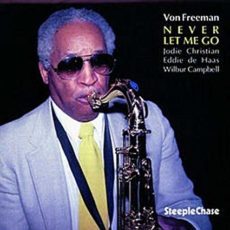
Daily Dose Of Jazz…
Eddie de Haas was born Edgar O. de Haas of Dutch descent on February 21, 1930 in Bandung, Java. His father was a flutist and played the ukulele and as a teenager, he became enthusiastic about jazz at the age of ten. A move from Java to the Netherlands in 1946 and it was while there he started playing bass in 1951.
He first accompanied Pia Beck, then Don Byas. He was on a European tour with Wally Bishop in 1952/53, accompanied Bill Coleman, 1954/55 Martial Solal, Zoot Sims/Henri Renaud, Dave Amram/Bobby Jaspar and Chet Baker on his European tours. In 1956 he played with Vera Auer and had his own trio. In 1957 he went to the United States.
In the United States, he initially played with Terry Gibbs, Miles Davis, Bernard Peiffer, Sal Salvador, Benny Goodman, Charlie Mariano/ Toshiko Akiyoshi, Blossom Dearie, Charlie Singleton, Chris Connor, Kenny Burrell, Roy Haynes, and Kai Winding, among others.
In 1962 he had his own quartet with Bobby Jaspar. In 1964/65 he was with Gene Krupa and in 1966/67 in Germany. He also spent a long time in France and other European countries, was in the backing band of Johnny Mathis in the early 1960s and accompanied Peter, Paul & Mary in the 1960s. 1964/65 worked in Gene Krupa’s big band and with Al Haig. Afterward, he worked as a freelance musician.
Since the 1960s he has been married to singer Geraldine Bey, who was then a member of the vocal group Andy & the Bey Sisters around her brother Andy Bey. 1968 saw him move to Chicago with his wife and later he regularly accompanied musicians in Chicago in the showcase. While living there he played with Von Freeman, with whom he also recorded, and Jodie Christian. In 1975 he performed at the Chicago Jazz Festival.
He is also on albums by Mezz Mezzrow, Dave Amram, Bob Wilber, Von Freeman, Chet Baker, Roy Haynes, Sonny Stitt, Louis Smith, Sir Charles Thompson and to hear Slide Hampton.
More Posts: bass,history,instrumental,jazz,music
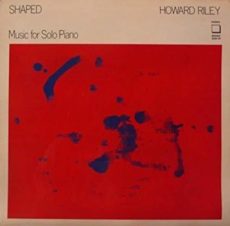
Daily Dose Of Jazz…
Howard Riley was born on John Howard Riley on February 16, 1943 in Huddersfield, Yorkshire, England. He began learning the piano at the age of six and started playing jazz as early as the age of 13. He studied at the University of Wales from 1961 to 1966, then Indiana University, and finishing up at York University in 1970). While studying he played jazz professionally, with Evan Parker (1966) and then with his own trio (1967–76), with Barry Guy on bass and Alan Jackson, Jon Hiseman, and Tony Oxley for periods on drums.
He worked with John McLaughlin in the late Sixties, the London Jazz Composers Orchestra and Oxley’s ensemble through the Seventies to 1981. He and Guy worked in a trio with Phil Wachsmann from 1976 well into the 1980s and played solo piano throughout North America and Europe. He played in a quartet, with Guy, Trevor Watts, and John Stevens, did duo work with Keith Tippett, with Jaki Byard, and with Elton Dean. From 1985 he worked in a trio with Jeff Clyne and Tony Levin.
Pianist and composer Howard Riley who worked in jazz and experimental music idioms continues to teach at the Guildhall School of Music and Drama and Goldsmiths, University of London, where he has taught since the 1970s.
More Posts: bandleader,educator,history,instrumental,jazz,music,piano




